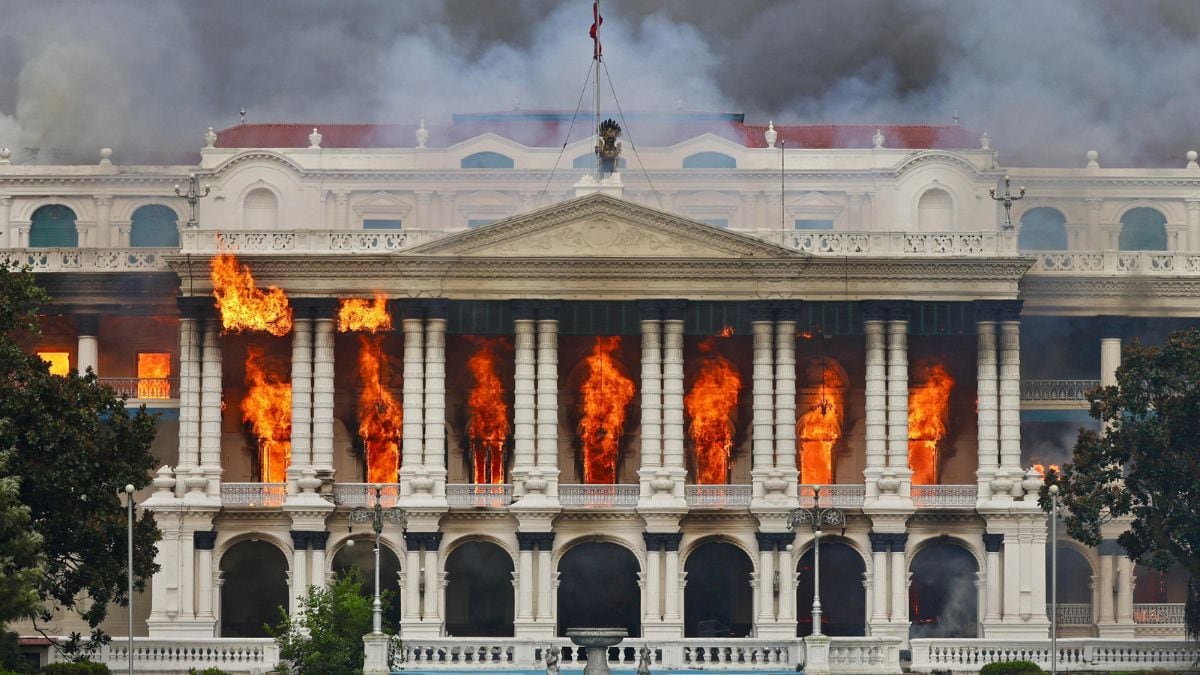Those Republicans and Democrats, they never seem to learn.
The S&P explained that it had taken the unprecedented step of downgrading the US credit rating from AAA to AA+ because the “political brinksmanship of recent months highlights what we see as America’s governance and policymaking becoming less stable, less effective, and less predictable,” according to a research update released Friday.
The point was underscored when S&P reps made the rounds on Sunday morning political news programmes to say that there’s a one in three chance that the US rating could be lowered further if the “political gridlock” continues.
[caption id=“attachment_55821” align=“alignleft” width=“380” caption=“Markets are bracing for the effect of the downgrade of US sovereign rating to seep through. Jo Yong hak / Reuters”]  [/caption]
“If the fiscal position of the United States deteriorates further or if the political gridlock becomes more entrenched, then that could lead to a downgrade. The outlook indicates at least a one in three chance of a downgrade over that period,” John Chambers, chairman of S&P’s sovereign ratings committee, said in an interview with ABC’s “This Week” anchor Christiane Amanpour.
David Beers, global head of sovereign ratings for S&P, offered a similar view in a Q&A with CBS News weekend anchor Anthony Mason. When the reporter asked Beers what role the “toxicdebate in Washington” had on the US credit downgrade,Beers replied, “Well, it highlighted for us something that we’ve been observing for a number of months now, which is simply the extraordinary difficulty of getting a political consensus about fiscal policy and fiscal policy choices now and in the future.”
But Congress has so far failed to take notice, and getting called out by S&P for partisan bickering has only led to well, more partisan bickering.
Impact Shorts
More ShortsFalling on deaf ears
Once the news of the S&P downgrade hit the news, the Democrats began calling the historic development the “Tea Party downgrade.”
“This is the Tea Party downgrade because a minority of people in the House of Representatives countered even the will of many Republicans in the United States Senate who were prepared to do a bigger deal,” Sen. John Kerry, a Democrat from Massachusetts, told Fox News.
Former Democratic National Convention Chairman Howard Dean used more colorful language to make a similar point on “Face the Nation.““I think this is [the] Tea Party’s problem. I think they’re totally unreasonable and doctrinaire and not founded in reality. I think they’ve been smoking some of that tea, not just drinking it,” he said.
For their part, Republicans are blaming President Barack Obama’s lack of leadership for the downgrade.
“America’s creditworthiness just became the latest casualty in President Obama’s failed record of leadership on the economy,” Mitt Romney said.
Prominent Republicans, including presidential candidate Michelle Bachmann and House Speaker John Boehner, also demanded that Barack Obama force Treasury Secretary Timothy Geithner to resign. It’s no secret that Geithner intended to step down after the debt ceiling negotiations had been completed, but on Sunday, Geithner announcedthat he would remain at his post following some pressure from the White House.
The bad math defence
Meanwhile, the White House remains on the defensive. The US Treasury accused the S&P of basing its decision on a massive math error that understated the deficit reduction in the Budget Control Act passed last week.
S&P’s $2 trillion mistake led to a very misleading picture of debt sustainability - the foundation for their initial judgment. …. In their initial, incorrect estimates, S&P projected that the debt as a share of GDP would rise rapidly through the middle of the decade, and they cited this as a primary reason for a downgrade.
In S&P’s corrected estimates - which lowered S&P’s projection of future deficits by $2 trillion over 10 years and lowered S&P’s estimate of debt as a share of GDP in 2021 by 8 percentage points-public debt is much more stable.
The S&P has, in fact, acknowledged the error, but as _The Atlantic_put it, “politics was always a part of S&P’s calculus” andthe government “just spent the last two months threatening to technically default on the debt unless a minority of the minority party passed a measure to balance budgets in a recession. Talk about embarrassing.”
Whom to blame
Both Republicans and Democrats have had no problem pointing the finger at their colleagues on the other side of the aisle, but when S&P’s Chambers was asked by CNNwho was to blame, he said, “This is a problem that’s been a long time in the making – well over this administration, the prior administration.”
Some of the blame also falls on Congress, Chambers said. “The first thing it could have done is to have raised the debt ceiling in a timely manner so that much of this debate had been avoided to begin with, as it had done 60 or 70 times since 1960 without that much debate,” he said.
It doesn’t seem that elected officials are all that keen on hearing the call for bipartisanship coming from the S&P. But in maintaining the partisan impasse, politicians are also willfully ignoring the electorate.
Last week’s New York Times/CBS News pollfound that 82 percent of Americans disapproved of Congress, and when it came to the debt-ceiling specifically, 72 percent of Americans didn’t like the way Republicans behaved, and 66 percent opposed the way Democrats handled themselves.


)

)
)
)
)
)
)
)
)



